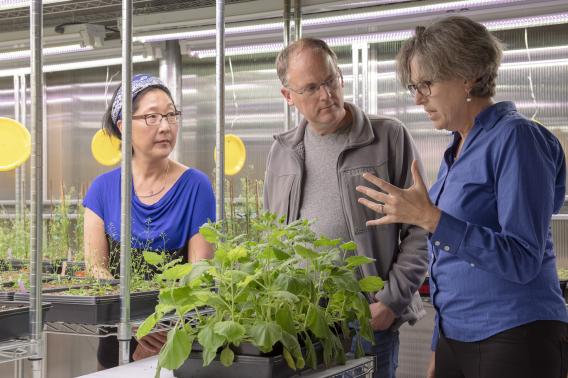Project Summary
Our Vision
Mental health is a prevalent issue that crosses social, economic, ethnic and political boundaries. Twenty percent of American adults suffered from a mental health issue in 2015. Despite decades of research on mental disorders, our understanding of how the central and peripheral nervous systems work remains limited and we lack tools suitable for manipulating and decipher the underlying molecular pathways. To address this gap, we propose to identify chemical actuators of neuronal receptors. Our strategy is to develop novel screens that we will conduct at the molecular, cellular and organismal levels. In Phase I of our project, we will devise methods enabling high-throughput screening of the effects of natural products on neural activity and on behavior in living animals and in human cell lines. We will focus on compounds synthesized by medicinal plants, a strategy that exploits the fact that such chemical libraries are enriched for their efficacy in manipulating the mammalian brain by both evolutionary selective pressure on plants, and by human selection. We will use the roundworm C. elegans as our principle experimental system, an animal that is uniquely suited to this design by virtue of its rapid growth, its genetic and optical accessibility, and by its wealth of genomic resources. Lead compounds identified in worms will then be tested in human cells. We will develop three screening assays based on: 1) imaging the activity of chemosensory neurons in worms (Aim 1); 2) a genetic selection strategy identifying genes involved in attraction and repulsion in worms (Aim 2); and 3) high-throughput studies of engineering human GPCRs in mammalian cells (Aim 3). Successful outcomes will include, but might not be limited to innovative, scalable platforms for mining a plethora of small molecules, targets of known psychoactive drugs, and an initial framework for studying the combinatorial chemical logic with combinatorial neuronal circuit logic. This should position us well to scale up and delineate the endogenous agonists of the orphan GPCRs, elucidate the molecular pathways underlying chemosensation, and elucidate the combinatorial chemical and neurological circuitry in Phase 2. A great deal of progress has been made in neurons in the 28 years since the start of the ‘Decade of the Brain’. Our proposed work is well poised to lead the next phase, ‘Decade of the Mind’, which aims to understand the mysteries of how the mind works based on the activities of the brain.Project Details
Funding Type:
Big Ideas in Neuroscience Award
Award Year:
2018
Lead Researcher(s):
Thomas Clandinin
(Neurobiology)
Miriam B. Goodman
(Molecular & Cellular Physiology)
Sue Y Rhee
(Plant Biology, Carnegie Institute for Science)
Team Members:


